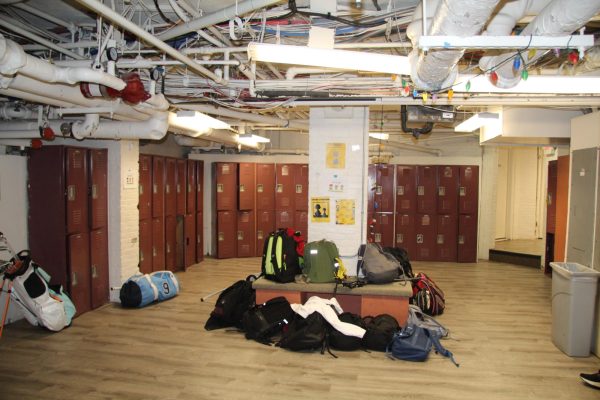Clothing – Fast Fashion’s Environmental Impact
In recent years the fast fashion industry has skyrocketed thanks to social media, rapid trend cycles, and increased consumerism, but behind these trendy, cheap items lies a dark side to the fashion industry.
In the 1990s, the fast fashion model was pioneered by Spanish fashion retailer, Zara. In order to keep up with trends, Zara developed a rapid production rate in which clothing could go from design to stores in just 2 weeks. Many other companies such as H&M and Forever 21 followed in Zara’s footsteps by adopting this model.
Lately, however, a new wave of fast fashion has emerged in the form of companies such as Shein, Romwe, and Fashion Nova. This “ultra-fast fashion”, as some have labeled it, improved strategies from the previous fast fashion empire, and brought them into a 21st-century marketplace.
These new fast fashion companies target a young demographic through social media, thus reaching millions of potential customers instantaneously. Additionally, many of these companies operate entirely online, eliminating the need for physical stores and further increasing profits.
Shein, for example, perfected this marketing strategy by collaborating with celebrities such as Katy Perry and Lil Nas X, as well as trendy influencers like Addison Rae. Additionally, they’ve cemented their reputation among young consumers through unsponsored clothing hauls posted on social media. These “Shein hauls” are all over platforms such as Youtube, Instagram, and Tiktok, racking up millions of likes and inadvertently promoting the brand.

At $15 for a pair of jeans, the ridiculously low prices of these ultra-fast fashion companies seem too good to be true. However, the hidden cost lies in environmental repercussions and human disregard.
One area where this environmental impact is most apparent is our waters. The fashion industry is the 2nd highest consumer of water, producing 20% of global wastewater and releasing half a million tons of fibers into the oceans each year. To contextualize this waste, a single pair of jeans requires 200 gallons of water to produce.
Additionally, factories and transportation required to produce and ship clothing emit an enormous amount of harmful gases such as carbon dioxide. The United Nations Alliance for Sustainable Fashion reported that the fashion industry accounts for 8-10% of total carbon emissions, which is more than the emissions of flights and marine shipping combined.
Fast fashion thrives on the existence of micro trends which are cheap, trendy fashion items that are designed to last a short period of time and are primarily born from whatever is popular on social media. These clothes are typically thrown away or donated after a short period of time due to the fleeting popularity of such trends and cheap materials used to make them.
The Hackley community is not immune to this issue. Here on campus, students sport the latest fashionable microtrend. From resin rings, to the Vivienne Westwood pearl choker, patchwork pants, hibiscus print, and sweater vests, Hackley students quickly adapt to whatever’s “in” and then abandon it once it’s out of style.
HEAL club leader Dechhen Sherpa reflected on this phenomenon saying, “We all have those classes where everyone’s on their laptop shopping, so there is definitely a consumer culture around Hackley over what you buy and what you wear”.
This cycle of rapid consumption and subsequent discarding amounts to massive amounts of waste. The Environmental Protection Agency estimated that around 85% of all textiles go to landfills each year. This rising consumer culture, accelerated by the existence of fast fashion, has resulted in the increased purchase of clothing with shorter lifespans for each. Currently, the average consumer purchases 60% more clothes than 15 years ago and keeps each piece for half as long.

The hidden cost of fast fashion not only falls on the environment but directly affects workers too. Many fast fashion companies have relocated their manufacturing facilities overseas to countries with relaxed labor laws where low wages and extensive overtime hours are permitted. By saving costs on manufacturing, at the expense of workers, these companies increased their profits tremendously.
Textile workers in fast fashion factories are often paid dismal wages and forced to work long hours in miserable conditions. An investigation led by the United States Labor Department discovered that factory workers for Fashion Nova were paid as little as $2.77 an hour. Similar conditions were reported among seamstresses for Shein who worked 75 hour work weeks for minimal wages.
Additionally, the conditions these people work in are poor at best, and deadly at worst. In 2013 an 8 story factory building in Bangladesh collapsed killing 1,021 people and injuring more than 2500. Army Captain Shahnewaz Zakaria said that “most [of the bodies] are female garment workers”.
In a system of rapid production, sales and profits often supplant human welfare. Shein and other companies take advantage of their workers’ poverty and desperation, knowing that they are willing to sacrifice safety and quality of life for work, feeling that they have no other choice to survive.
The brunt of this danger disproportionately falls on young women, with 80% of the world’s 75 million garment workers being women between the ages of 18 and 24. These women are trapped in a cycle of poverty often earning less than $3 a day.
So, what alternatives to fast fashion exist?
Sustainable fashion is a recent movement that aims to produce clothing in a manner that is both ecologically and socially responsible. Some core characteristics of sustainable fashion are sufficient wages for workers including benefits such as healthcare and time off, and the use of eco-friendly materials in products. Well-known sustainable fashion brands include Reformation, Patagonia, and Levi’s.
be mindful of how much you’re going to use an item, and if it’s actually good quality, because I know a lot of people who buy clothes and then don’t even wear it once
— Dechhen Sherpa
However, many have raised concerns about the accessibility of sustainable clothing, saying it’s not a realistic alternative for many people. Due to the higher wages and better-quality materials used in sustainable fashion, clothing prices rise as well. For example, a dress from sustainable clothing company Reformation can cost up to $300, well out of the budget for many people. With that same $300 dollars, one can buy over a dozen items on fast fashion sites like Shien, thus demonstrating the allure of such companies.
It’s important to note that when criticizing fast fashion, the blame should be placed on the industry. Many critics are quick to attack those who buy from fast fashion companies, who are often unaware of the hidden cost of the industry or can’t afford more sustainable alternatives.
Fortunately, sustainable fashion doesn’t have to be expensive. Sustainable fashion is not restricted to buying new things, but also includes buying clothing secondhand, and repurposing old items. Thrifting is a great sustainable alternative where one can buy clothes for low prices and help decrease the amount of clothing that ends up in landfills.
Dechhen advises those looking to incorporate sustainability into their fashion, “to be mindful of how much you’re going to use an item, and if it’s actually good quality, because I know a lot of people who buy clothes and then don’t even wear it once”.









![Although the affect of COVID-19 has been on a decline with less cases and deaths allowing most of us to remain mask free, people on the Hilltop are still choosing to mask up. Personal health concerns as well as helping an elderly neighbor are reasons as to why middle school science teacher Emma Olsen still wears a mask years after the COVID-19 pandemic began. Since I am helping take care of him, you know I go over to work with his dogs, that kind of thing; I dont want to bring [the virus] home to him, Ms. Olsen said.](https://hsdial.org/wp-content/uploads/2024/03/IMG_1713-450x600.jpg)
